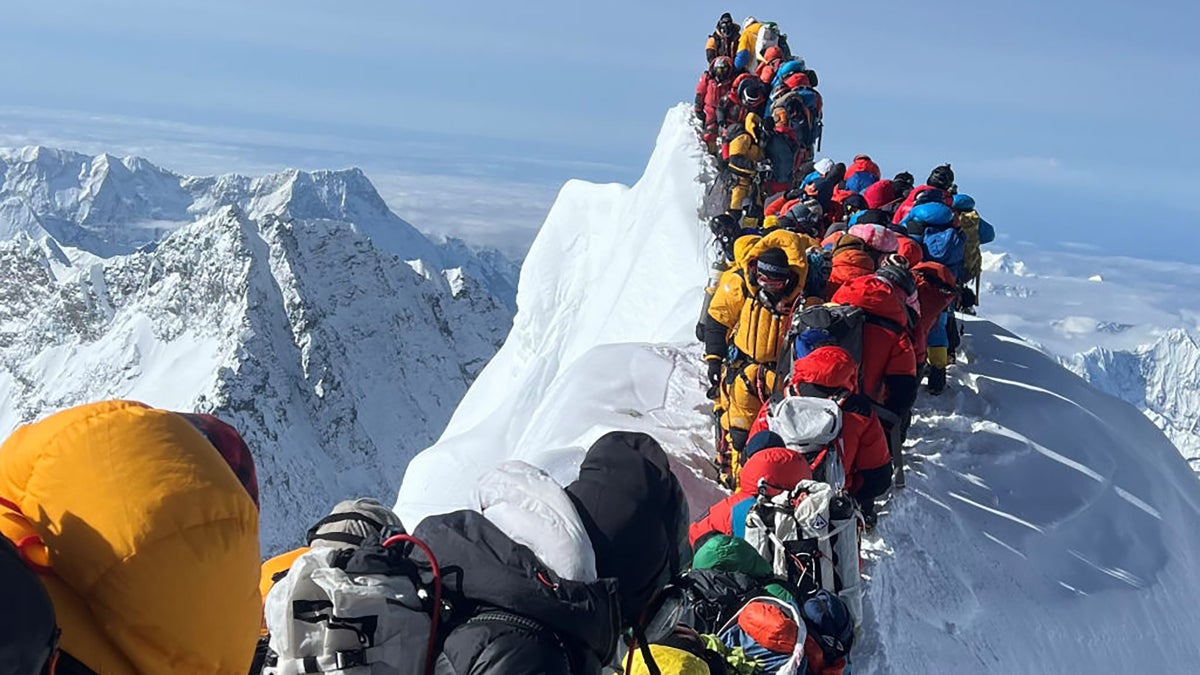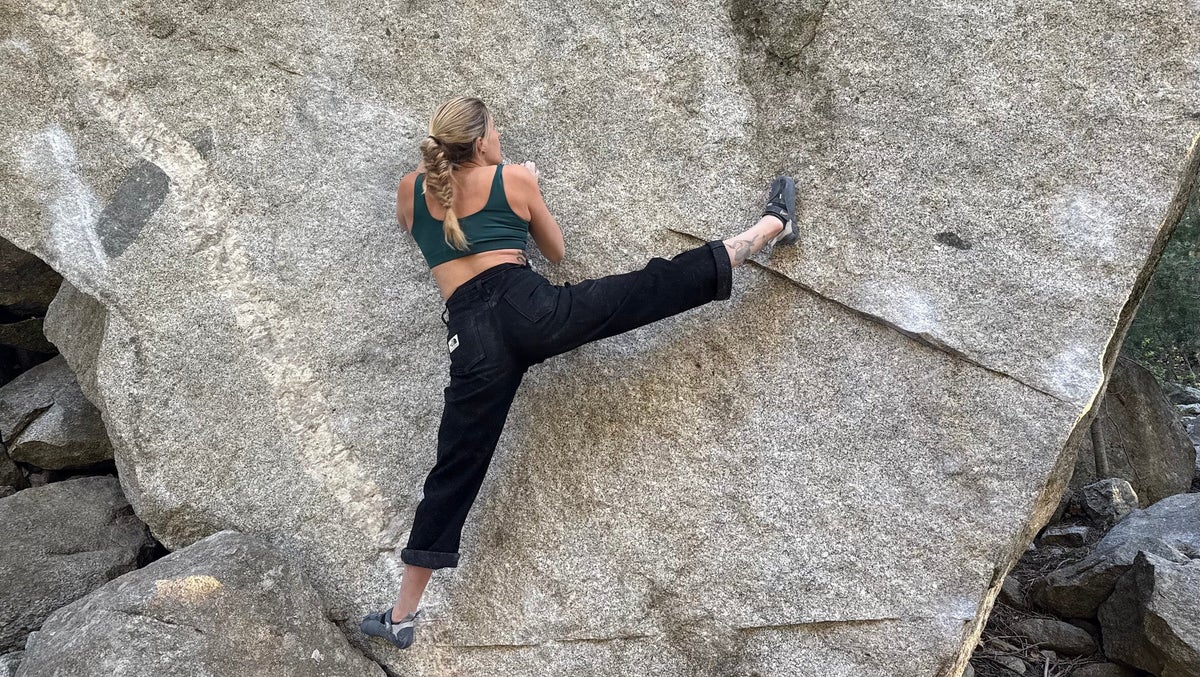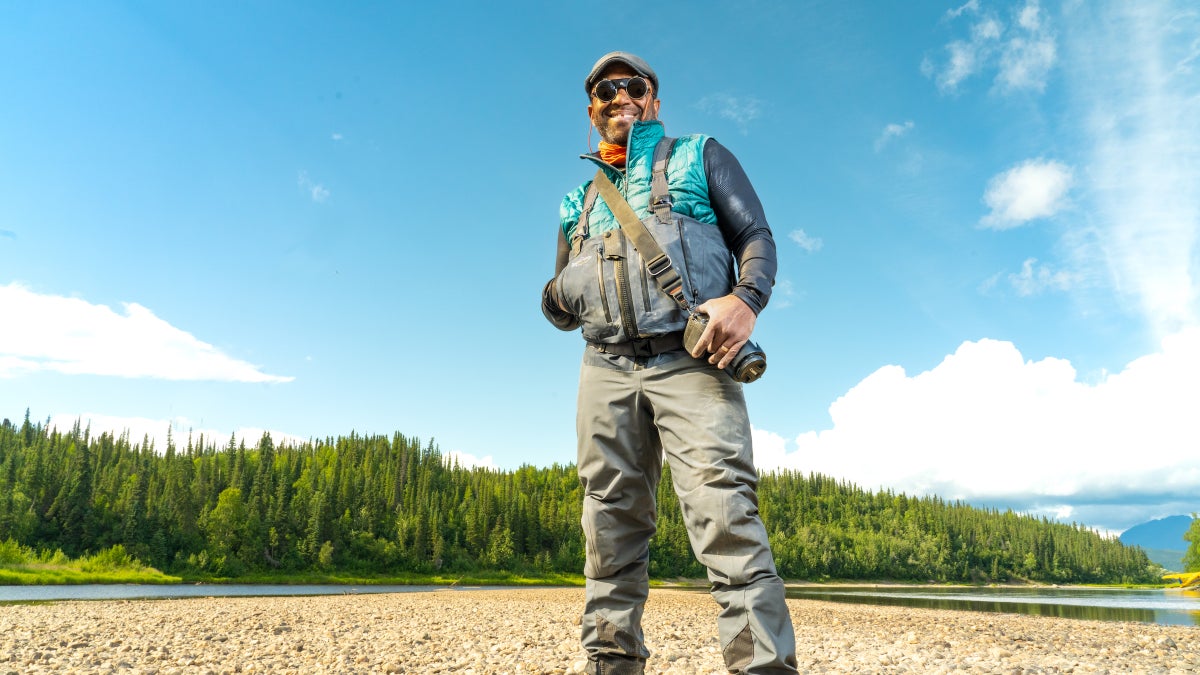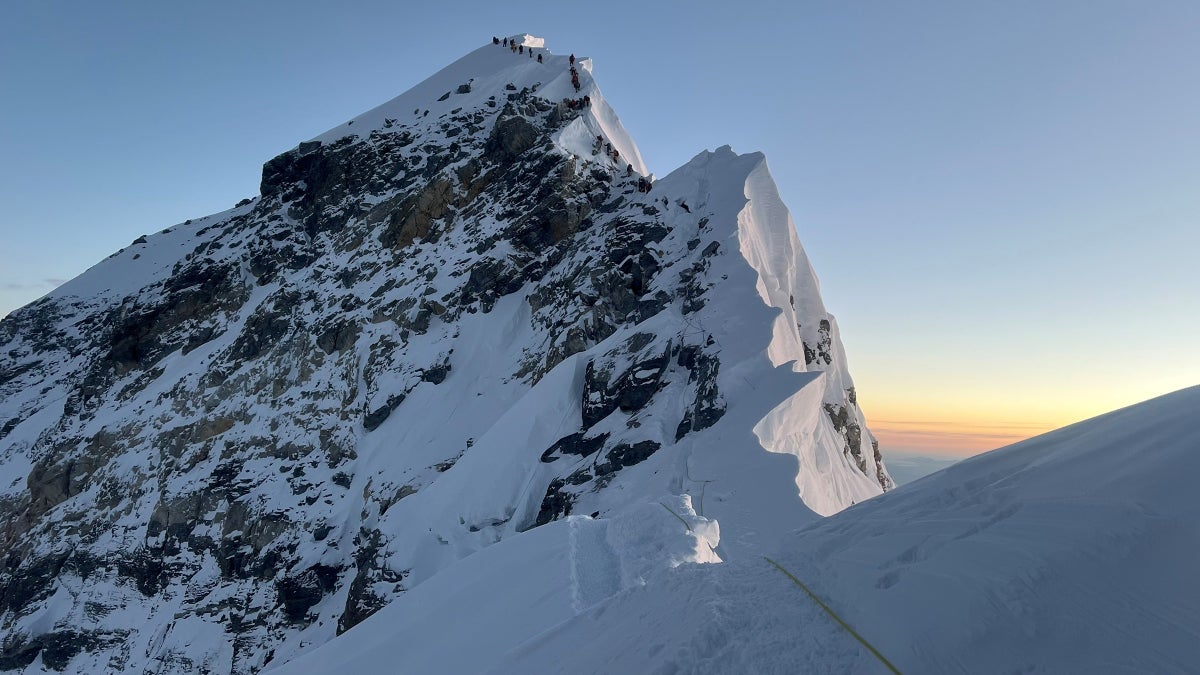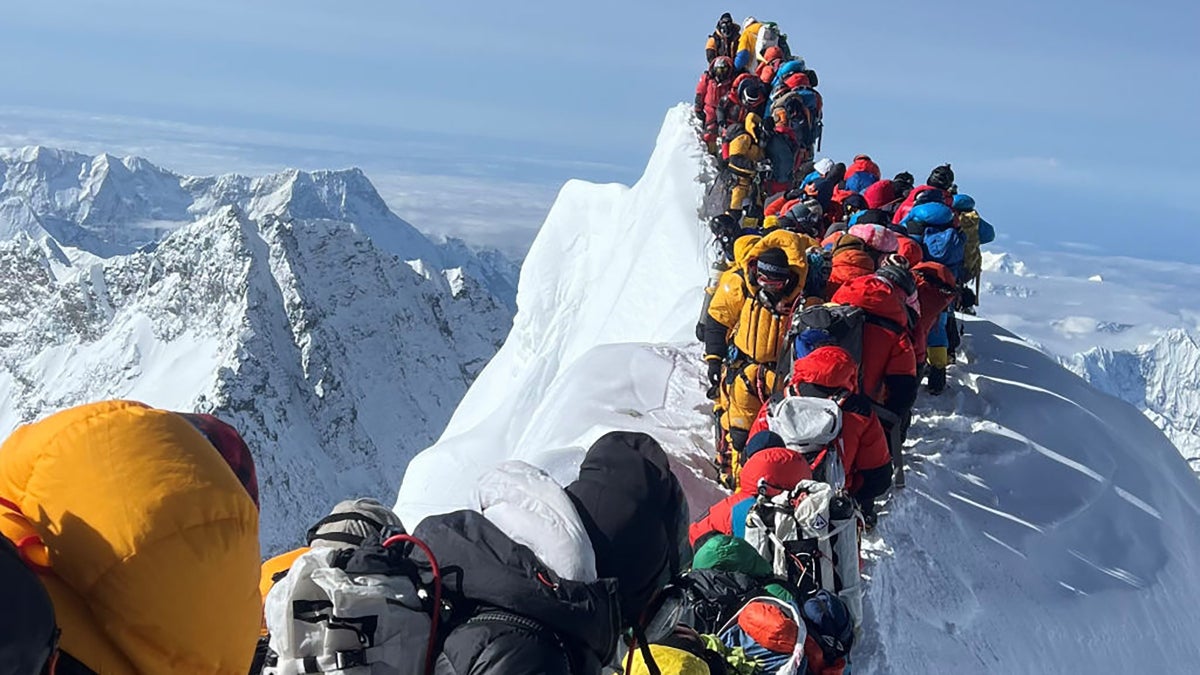
Hundreds of climbers and guides are headed to the summit of Mount Everest to make the most of the first stretch of favorable weather of the 2025 climbing season.
Here in Base Camp, the chatter amongst expedition leaders is about the traffic jams and conga lines that will soon appear on the mountain. You’ve probably seen photos of the congestion on Mount Everest, with a line of several dozen climbers stretching down an icy slope.
This year, approximately 450 climbers are vying for the summit. Often, there are twice as many guides, climbing sherpas, and support climbers to help these clients reach the top. With all of these people heading for the summit, crowding is inevitable along the route, which ascends 11,400 feet over 5.5 miles.
Outside spoke to expedition operators about the traffic jams, why they occur, and how guides can safely navigate them.
Where Does Gridlock Occur and Why?
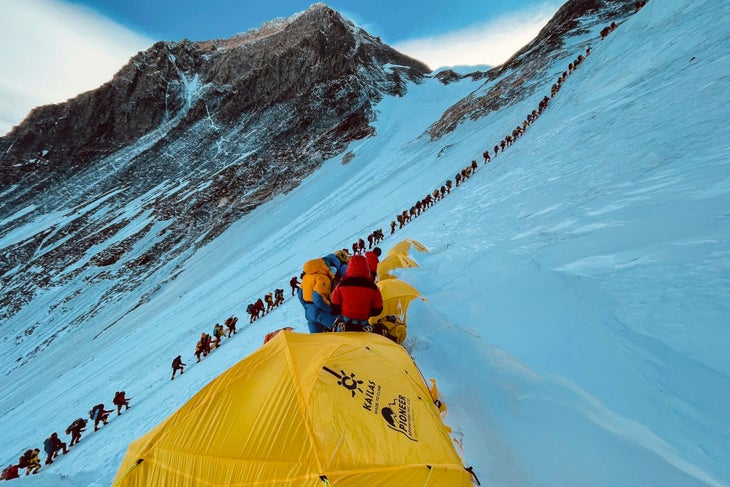
Due to the fickle conditions on the world’s highest peak, hundreds of climbers embark for the summit at the same time to make the most of the few “weather windows” that appear each spring. Hundreds of people hike along the same narrow route and use the same safety ropes during the trip.
Crowding occurs whenever the procession slows down, either because of a tired individual, tricky terrain, or some other obstacle.
Guides told us about several areas where bottlenecks arise every year. It’s no coincidence that these areas are some of the hardest sections of the route.
The yellow band (~7700 m) on Mt #Everest (8848.86 m), 20.05.2024. Video ©: Rajan Dwivedi. pic.twitter.com/yUwbdQuvlc
— Everest Today (@EverestToday) June 6, 2024
The first crowded sections are in the Khumbu Icefall, the cascading glacier that shifts each year as it spills over Mount Everest’s lowest flanks. In this twisted section of ice and crevasses, crowds occur next to vertical sections. Climbers use a combination of ladders, fixed ropes, and ascenders called “jumars” to scale these vertical ice and rock walls, but each person’s progress is slow, which causes logjams when many people arrive at once.
The next section of climbing occurs later in the route, near the deep crevasse or bergschrund just below Camp III near the top of the Lhotse Face. Climbers must ascend the icy and steep top of a glacier before they reach the snowy and stable slopes around camp.
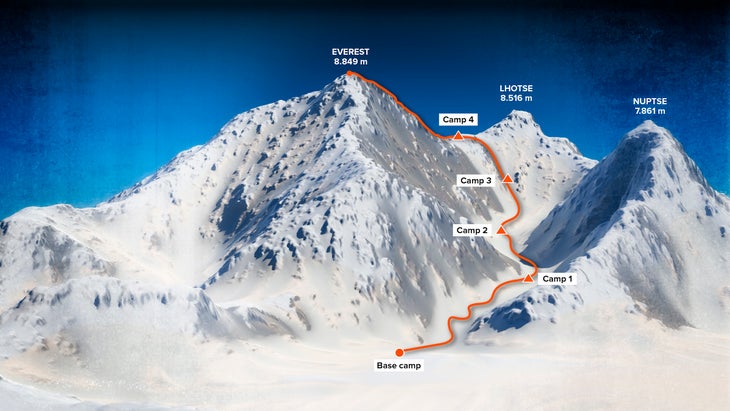
Other slowdowns occur just above the Geneva Spur at 27,000 feet, where the slope becomes nearly vertical, and at a series of large rocks near the South Summit at 28,700 feet.
The final section is perhaps the most dangerous: the narrow summit ridge that extends from the Hillary Step to the summit. In 2024, two climbers fell to their deaths while attempting to sidestep crowds in this section.
Why It’s Hard to Avoid Crowding
Guides on Mount Everest must strike a delicate balance between the demands of clients—some of whom are impatient to get to the summit—and the weather windows on the mountain.
Ryan Waters, co-owner of the Boulder, Colorado-based company Mountain Professionals, told me that he informs his clients of his target date for climbing the peak. He also keeps a somewhat flexible schedule in case multiple other teams head up on the same day.
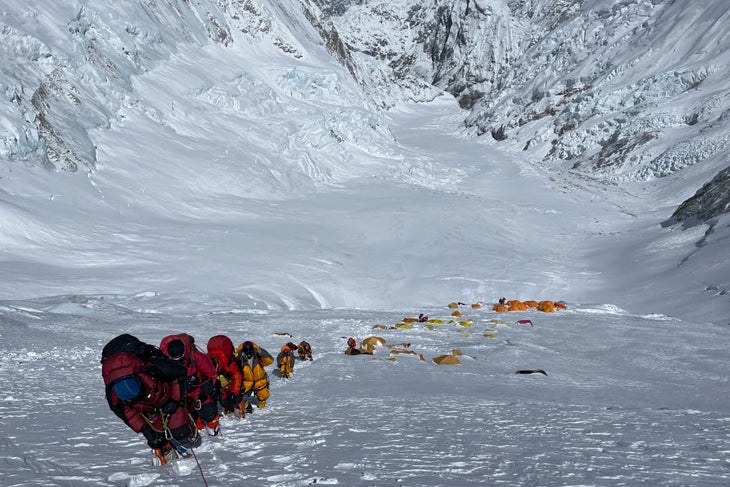
“There are a few ways to do it. The first is knowing when other groups are potentially leaving and going to summit from conversations you hear in the camps,” he said. “Secondly, changing up your departure time to try to not be around other groups can help a lot.”
But, Waters admitted this is often easier said than done, since concrete information is hard to come by in Base Camp. I can attest to his frustration. Throughout Base Camp, rumors frequently swirl about which group is targeting what date, and which climbers are getting ready to ascend the peak. The critical information about congestion on the mountain exists in this rumor mill.
Thus, sometimes groups simply cannot avoid the inevitable dynamic of heading onto the peak alongside everyone else.
“If we get into crowds, then it’s just a situational management scenario,” Walters shared.
How to Climb In a Crowd
I posed the question (how do you navigate crowds?) to Mingma David Sherpa, co-founder of Elite Eped guiding company, as we sat in the mid-morning sunshine and sipped coffee.
“It’s not like a traffic jam with cars in it,” he told me. “There are often opportunities to overtake or go around slow climbers. But the guide has to know their skills and their client’s skills.”
He described several methods that guides and climbers can employ to pass slower people along the route, all of which involved advanced rope techniques. But these techniques are challenging at higher altitudes, when all climbers must clip themselves into the safety ropes.
When passing a slower climber, a guide and client must unclip themselves from the line, pass around the slower climber, and then clip back in. It’s not impossible, but it’s a technique best left to experienced professionals.
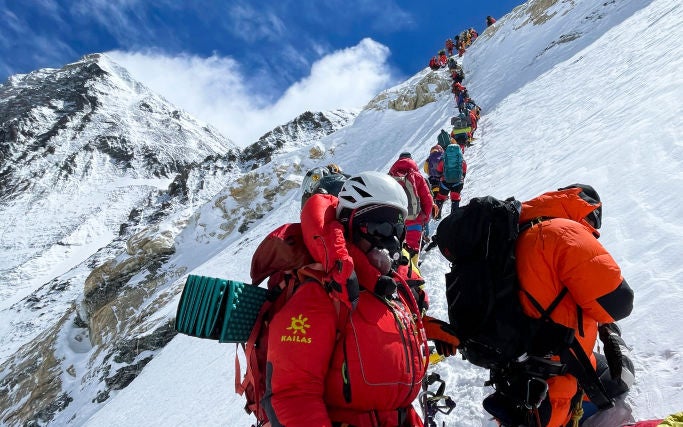
Perhaps the most important element of passing is knowing whether or not a client can do it, he said.
“Having experience as a guide is really important,” Mingma David said. “It really helps a lot. I take time on the training rotations to get to know my clients’ speed and skill.”
The flow rate of oxygen can also speed up or slow down a client, he said. “As we climb, I adjust their oxygen flow rates—we reduce if the climbing slows, increase if the terrain is steep or overhanging,” he said.
An Emphasis on Courtesy
All of the sources I spoke to echoed a similar point: yelling at slow climbers never improves or speeds up the crowding.
“You can adjust your time and start much earlier,” Mingma David said, “But the client has paid all that money, and they want to be on the top in the daylight.”
Dutch guide Arnold Coster, who is leading the Seven Summits Treks expedition this year, told me that “politeness helps” when attempting to overtake someone along the route.
“It’s not that big of a deal, especially when everyone is moving upwards together,” Coster said. “Crowds don’t really slow you down.”
Instead, Coster said that climbers and guides need to focus more on the basics of mountaineering when ascending Mount Everest alongside dozens or hundreds of others. Proper hydration, nutrition, and oxygen support are critical during busy times on the mountain. And guides need to understand that their summit bid may be extended by several hours due to traffic jams.
“It’s like anywhere in life,” Coster said. “Remember that a lot of climbers up here become pretty unaware of their surroundings. If you shout at them politely, they’ll step aside and let you by.”
Want to stay up on Outside’s 2025 Everest Season coverage? Sign up for our Outside: Dispatches from Everest newsletter.

Ben Ayers is a filmmaker, journalist, and adventurer who splits his time between Vermont and Nepal. In 2022 and 2024 he chronicled the Mount Everest climbing season for Outside.
The post Overcrowding Is Inevitable on Mount Everest. Here’s How Climbers Deal With It. appeared first on Outside Online.











